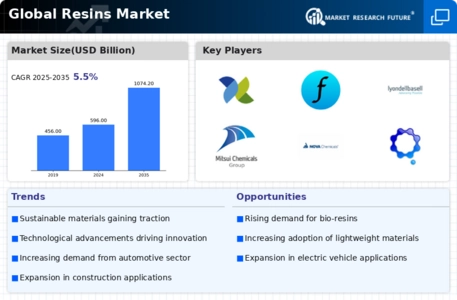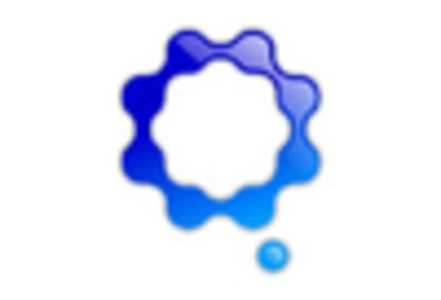Growth in Construction Activities
The construction industry is witnessing a resurgence, leading to increased consumption of resins for various applications, including adhesives, coatings, and sealants. The demand for durable and weather-resistant materials is propelling the use of resins in both residential and commercial construction projects. According to recent data, the construction sector is expected to grow at a compound annual growth rate of around 4% over the next few years, which will likely bolster The Global Resins Industry. This growth is further fueled by urbanization trends and infrastructure development initiatives, creating a favorable environment for resin manufacturers to expand their product offerings.
Rising Demand from Automotive Sector
The automotive sector is experiencing a notable surge in demand for resins, driven by the need for lightweight materials that enhance fuel efficiency and reduce emissions. Resins such as polycarbonate and epoxy are increasingly utilized in vehicle components, including dashboards, lighting, and structural parts. The automotive industry is projected to account for a significant share of the resins market, with estimates suggesting a growth rate of approximately 5% annually. This trend indicates a robust opportunity for manufacturers within The Global Resins Industry to innovate and cater to the evolving needs of automotive manufacturers, who are prioritizing sustainability and performance in their designs.
Expanding Applications in Electronics
The electronics sector is rapidly evolving, with resins playing a crucial role in the production of various components, including circuit boards and encapsulants. The demand for high-performance resins that offer thermal stability and electrical insulation is on the rise, driven by the proliferation of consumer electronics and smart devices. The Global Resins Industry is expected to benefit from this trend, as the electronics market is projected to grow at a rate of approximately 6% annually. This growth presents opportunities for resin manufacturers to develop specialized products tailored to the unique requirements of the electronics industry, thereby enhancing their competitive edge.
Increased Focus on Sustainable Practices
Sustainability is becoming a central theme across industries, influencing The Global Resins Industry significantly. Manufacturers are increasingly adopting eco-friendly practices, including the use of recycled materials and the development of biodegradable resins. This shift is driven by consumer preferences for sustainable products and regulatory pressures aimed at reducing environmental impact. The market for sustainable resins is anticipated to grow substantially, with projections indicating a potential increase of 7% in demand over the next few years. This trend not only aligns with The Global Resins share.
Technological Innovations in Resin Production
Technological advancements in resin production processes are significantly influencing The Global Resins Industry. Innovations such as bio-based resins and advanced polymerization techniques are enhancing the performance and sustainability of resin products. The introduction of smart resins, which can adapt to environmental changes, is also gaining traction. These developments not only improve the quality of resins but also align with the increasing demand for eco-friendly materials. As manufacturers invest in research and development, the market is likely to see a shift towards more sustainable and efficient resin solutions, potentially increasing market share and profitability.





















Leave a Comment